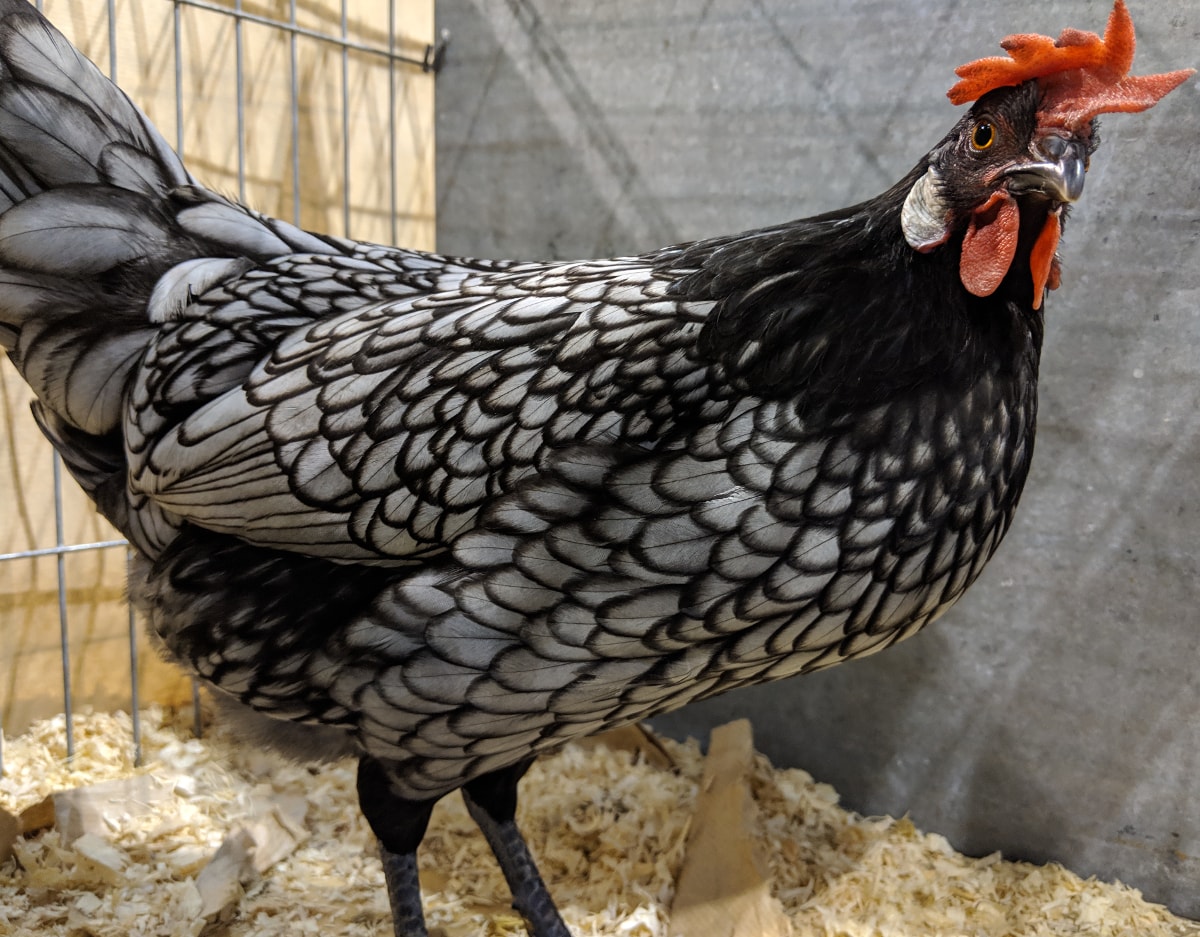The Andalusian chicken breed was initially developed in Andalusia, Spain. The Andalusian has been bred in the United States and Great Britain.
Andalusian Chicken Characteristics
Andalusians are small, active, closely feathered birds that tend to be noisy and rarely go broody. The plumage is dark and laced. Andalusians are a typical example of the unstable blue color we see in the poultry industry. It is the result of a cross between black and white.
When two blues are mated, they produce offspring in the ratio of one black, two blues, and one white. These whites and blacks when mated together will produce mainly blues. Andalusians are beautiful when good, but the percentage of really good ones runs low in many flocks because of this color segregation. Hence, they are not widely bred and never in large numbers.
Andalusians are closely feathered, active, and good layers of large white eggs. Blue (laced) is the only variety accepted by the APA, but when two blues are crossed, 25% will be black and 25% will be white. (Incidentally, Mendel used these birds in his genetic experiments, thanks to which we know things like two brown-eyed people can have blue-eyed children.) This breed is rare but on the comeback thanks to hobbyists!

Varieties: Black, Splash, Blue
Standard Weights: Cock: 7 lbs.; hen: 5-1/2 lbs.; cockerel: 6 lbs.; pullet: 4-1/2 lbs
Skin Color: White
Egg Shell Color: White
Use: An ornamental fowl with fairly good egg production potential.
Andalusian chickens are wonderfully designed for foraging on the range. The breed’s rugged nature makes it hardy, even in cold climates. However, it doesn’t stand confinement well and is predisposed to feather eating. An excellent traditional cross is an Andalusian male over Langshans females. This produces a hardy brown egg layer that matures early.
The best colored Blue Andalusian pullets are produced by mating a dark blue male to a properly colored hen. The best colored Blue Andalusian cockerels are produced by using slightly dark parents of both sexes. There is a tendency for the color to become too light as generations go by. The periodic use of black offspring will repair this defect. The blue ground color should extend down to the fluff.
The Blue Andalusian chicken was recognized by the American Poultry Association as a standard breed in 1874. Males weigh 7 pounds and females weigh 5.5 pounds.
Frequently Asked Questions on Andalusian Chicken
Are Andalusian chickens good egg layers?
Andalusians are good layers. You can expect 3 white, medium to large, eggs per week. This equates to roughly 150 eggs per year. The really nice thing is that they are said to lay through winter too!
Are Andalusian chickens nice?
They are very good foragers and prefer free-ranging. Andalusian chickens are very hardy birds and they can perform well in almost all climates. They are cold-hardy, friendly, flighty, very active, and noisy.
What color eggs do Andalusian chickens lay?
Andalusian hens are good white egg layers, with very little tendency towards broodiness. Both sexes have long, deep bodies, white skin, and clean, lead-blue shanks and toes.
How many eggs do Andalusian chickens lay?
Andalusian chickens are quite good when it comes to laying eggs. These birds produce about three eggs each week, for a total of between 150 and 165 eggs each year. The eggs are medium or large in size and are white in color.
Are Andalusian chickens rare?
Blue Andalusian chickens were imported into England in 1846 where they became very popular and then were imported to America in the 1850s. The birds had lost their popularity by the middle of the 20th century and became exceedingly rare.
See Also: